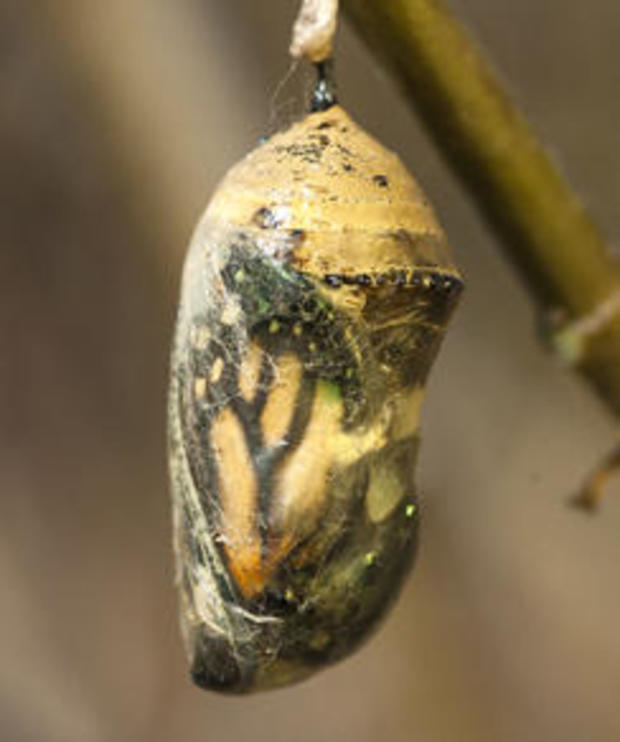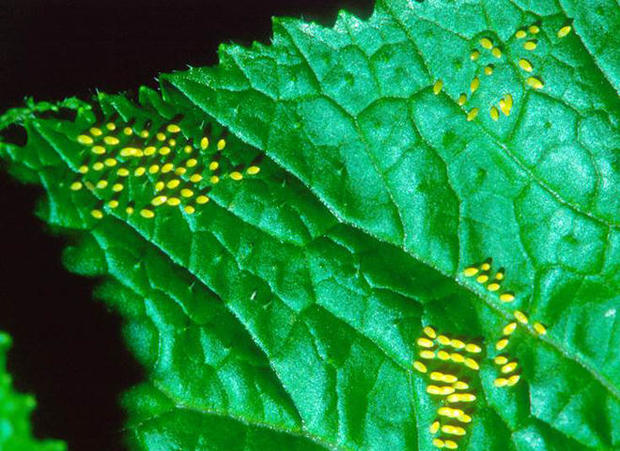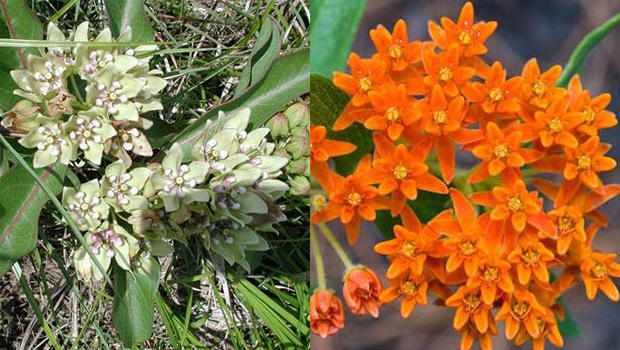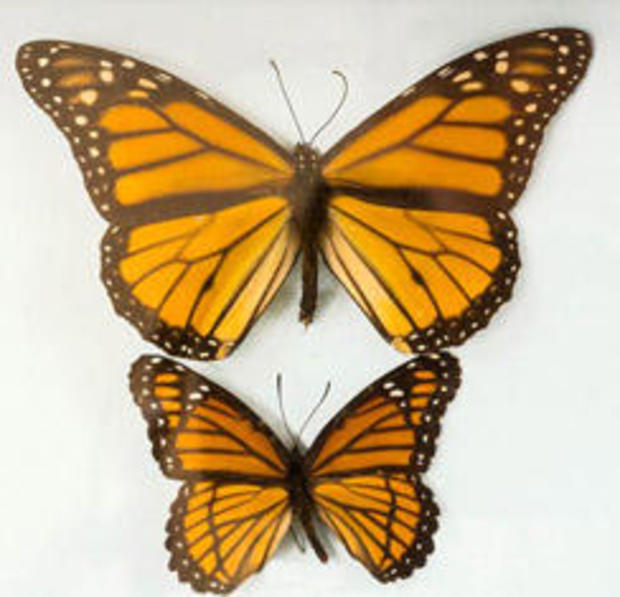Nature up close: Monarch butterflies
Monarch butterflies are not only beautiful, they also have one of the most unique life cycles in nature. They are an insect that migrates like birds, to avoid winter’s harshness. Their migration is unusual because individual monarch butterflies do not travel the entire route. It takes several generations to complete one migration cycle.
Butterflies, including monarchs, have a complete metamorphosis that includes four stages: an egg, a caterpillar, a pupa (chrysalis), and an adult. In late summer and early fall, as cooler temperatures set in, an unknown trigger stimulates the central and eastern North American adult monarch populations to begin storing fat and stop reproducing. As they fatten up they begin flying south, some as far as 3,000 miles, to reach their wintering oyamel fir tree groves in Mexico. Monarchs west of the Rockies don’t travel so far; they winter in costal California Monterrey pines or non-native eucalyptus trees.
In the spring these same adult monarchs begin flying north. They lay eggs on a milkweed plant and then die. The eggs hatch to produce a caterpillar which begins eating milkweed leaves. Milkweeds are their only host plant. When they get large enough, they form a chrysalis which appears dormant, but is in fact undergoing dramatic changes to produce an adult butterfly. When the adults emerge they feed on flower nectar and reproduce as they continue north.
Monarch butterflies usually go through four complete generations before they get to their summer homes. Once they reach their summer homes, they live for from two weeks to two months, reproduce, lay their eggs on native milkweed plants, and then die. The eggs hatch, the caterpillar eats milkweed, and produces a chrysalis that changes into an adult, which begins to travel south to continue the cycle.
Think about that for a minute: Imagine you were born in southern Mexico and then began traveling north. You grow to an adult as you travel and have kids. Those kids continue north and have their own kids. Those kids -- your great-grandchildren -- grow up and have kids who finally settle somewhere in the north and have kids.
Then your great-great-grandchildren, having never met their parents, grandparents or great-grandparents, begin to move south and return to the exact location where their great-great-grandparents overwintered. A truly amazing feat.
Among entomologists, there is much discussion of how the fourth or fifth generation of the year, the migrating butterflies of autumn, know where to go. Some contend they utilize directional aids such as the sun’s position or the Earth’s magnetic field, while others argue the butterflies have chemoreceptors to follow a chemically-marked trail back to the wintering grounds their great-great grandparents pioneered for them. No one knows how they do it. There is still much to be learned about monarch migration.
The dependence on milkweed for the larva is part of the monarch’s defense from predators, as milkweeds contain cardenolides, heart-stimulating compounds that can cause death. The larva concentrate the cardenolides in their tissues, and the adults retain them after emerging from the chrysalis. These chemicals are both noxious and toxic, as potential predatory birds quickly learn. A young inexperienced bird might sample one monarch, but after vomiting up the insect it will avoid any other insect similarly marked.
This leads to an amazing form of mimicry in the insect world. Viceroy butterflies look like monarchs, and for years were said to be Batesian mimics (that is, they benefitted from mimicking the orange and black color pattern). More recent research shows that the viceroy is really a Müllerian mimic, one that is also toxic, with the same color pattern and similar toxic chemicals in its body. Müllerian mimicry is beneficial to both butterflies, since a predator only needs to taste one of either species to learn to avoid the orange/black aposematic color patter
These color markings and chemicals have evolved independently a number of times. There is an African ecological equivalent to the monarch butterfly, the African tiger butterfly, which looks very similar to our monarch and contains toxic anti-predator chemicals. This species was first depicted in a nature scene on Egyptian Nebamun’s tomb wall 3,500 years ago in Luxor -- the first recorded butterfly painting.
One of the African tiger butterfly’s potential predators is the white-fronted bee-eater in southern Africa. In 2016 we watched a colony of white-fronted bee-eaters fighting over nesting holes and foraging. Occasionally a bee-eater caught an African tiger butterfly, only to spit it out once it got a taste. Invariably another bee-eater grabbed the discarded butterfly.
We watched numerous bee-eaters swoop out to catch African tiger butterflies but they always spit them out. It was a reminder that convergent evolution often duplicates defenses in unrelated species, such as the African Tiger and the North American monarch. How both species ended up with the similar warning colors of black and orange is still a mystery.
Monarch butterfly populations have been declining in recent years for a number of reasons, including loss of habitat, illegal logging of their wintering areas in Mexico, herbicides, and not enough milkweed along their migration routes. We can all help them out by planting milkweeds and urging local road maintenance crews to refrain from mowing roadsides in the spring.
- Planting a future for monarch butterflies (“Sunday Morning”)
- Gallery: Monarch butterflies
- Amid California drought, hope for the monarch butterfly
- Saving the monarch butterfly
Judy Lehmberg is a former college biology teacher who now shoots nature videos.
For more info:
- Judy Lehmberg (Official site)
- Judy Lehmberg’s YouTube Channel
To watch extended “Sunday Morning” Nature videos click here!








